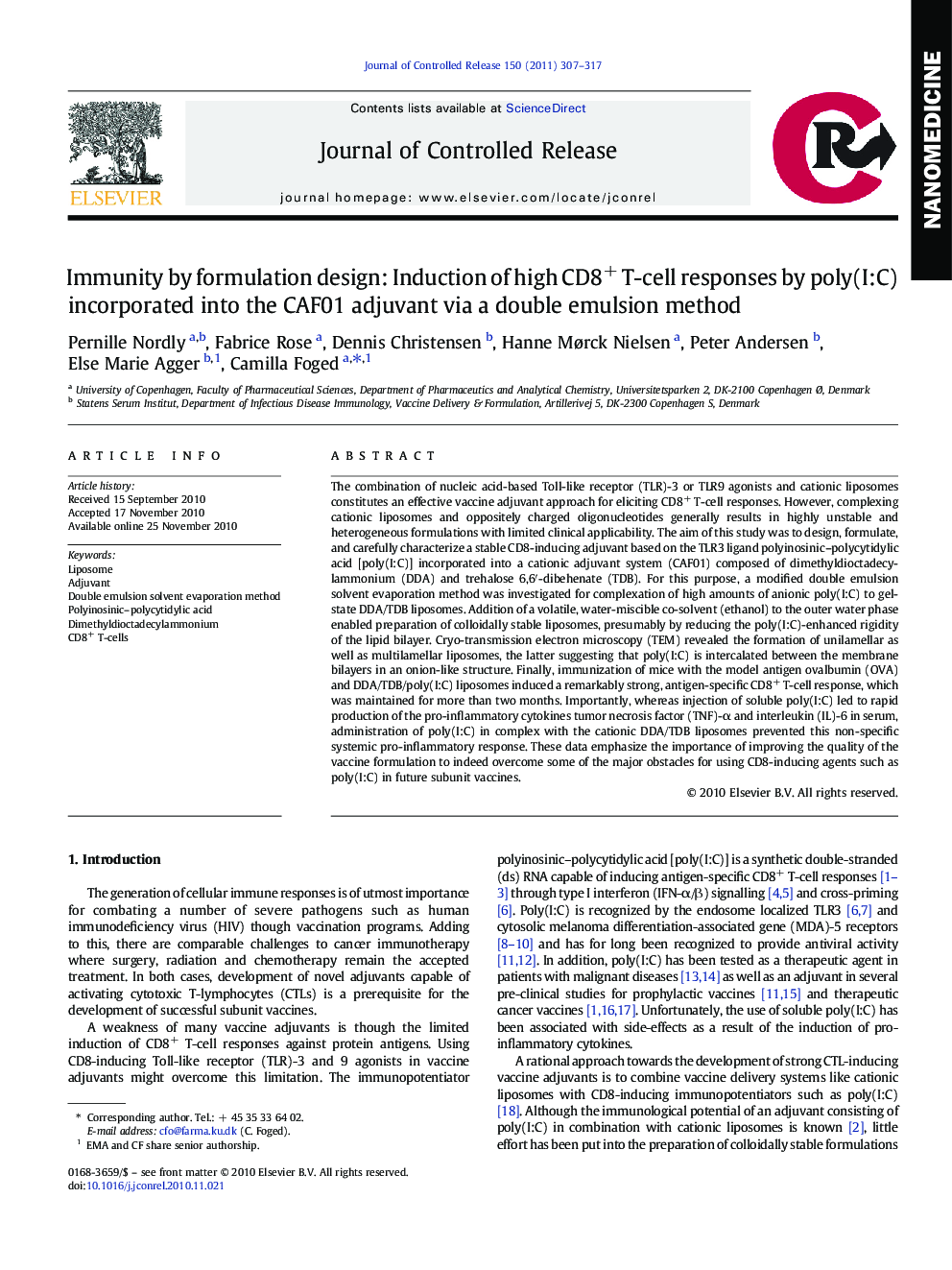| Article ID | Journal | Published Year | Pages | File Type |
|---|---|---|---|---|
| 1425306 | Journal of Controlled Release | 2011 | 11 Pages |
The combination of nucleic acid-based Toll-like receptor (TLR)-3 or TLR9 agonists and cationic liposomes constitutes an effective vaccine adjuvant approach for eliciting CD8+ T-cell responses. However, complexing cationic liposomes and oppositely charged oligonucleotides generally results in highly unstable and heterogeneous formulations with limited clinical applicability. The aim of this study was to design, formulate, and carefully characterize a stable CD8-inducing adjuvant based on the TLR3 ligand polyinosinic–polycytidylic acid [poly(I:C)] incorporated into a cationic adjuvant system (CAF01) composed of dimethyldioctadecylammonium (DDA) and trehalose 6,6′-dibehenate (TDB). For this purpose, a modified double emulsion solvent evaporation method was investigated for complexation of high amounts of anionic poly(I:C) to gel-state DDA/TDB liposomes. Addition of a volatile, water-miscible co-solvent (ethanol) to the outer water phase enabled preparation of colloidally stable liposomes, presumably by reducing the poly(I:C)-enhanced rigidity of the lipid bilayer. Cryo-transmission electron microscopy (TEM) revealed the formation of unilamellar as well as multilamellar liposomes, the latter suggesting that poly(I:C) is intercalated between the membrane bilayers in an onion-like structure. Finally, immunization of mice with the model antigen ovalbumin (OVA) and DDA/TDB/poly(I:C) liposomes induced a remarkably strong, antigen-specific CD8+ T-cell response, which was maintained for more than two months. Importantly, whereas injection of soluble poly(I:C) led to rapid production of the pro-inflammatory cytokines tumor necrosis factor (TNF)-α and interleukin (IL)-6 in serum, administration of poly(I:C) in complex with the cationic DDA/TDB liposomes prevented this non-specific systemic pro-inflammatory response. These data emphasize the importance of improving the quality of the vaccine formulation to indeed overcome some of the major obstacles for using CD8-inducing agents such as poly(I:C) in future subunit vaccines.
Graphical abstractFormation of lipid-poly(I:C) complexes at the w1/o interface during preparation of CD8+-inducing DDA/TDB liposomes with poly(I:C) by a double emulsion solvent evaporation method.Figure optionsDownload full-size imageDownload as PowerPoint slide
